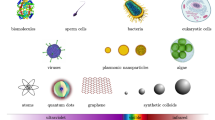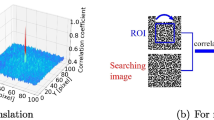Abstract
A specimen illuminated by coherent light is imaged by a camera through a shearing mechanism so that the speckle from one point on the surface can be made to interfere with the speckle from a neighboring point. The resultant speckle pattern is recorded. By mechanically interfering the recorded speckle pattern corresponding to deformed and undeformed states of the specimen, respectively, using double-exposure technique, a speckle-moiré-fringe pattern is generated. These fringes which depict derivatives of deflections of the specimen are made visible by spatial-filtering technique. Speckle-moiré fringes can also be obtained in real time. This method is a new interferometry and will be referred to as “speckle-shearing interferometry”.
Speckle-shearing interferometry has the same function as Ligtenberg's technique. However, it does not have the sometimes inconvenient requirement of Ligtenberg's technique that the surface of the specimen must be of mirror quality. The new technique will be particularly useful in studies of flexural deformation such as flexed beams and plates.
Although speckle-shearing interferometry is an interferometric method, it overcomes several of the limitations associated with holographic and speckle interferometries, namely: (1) the setup is simple and does not need laborious alignments of optical components, (2) it does not require stringent mechanical and ambient stabilities, (3) coherent requirement of light is greatly relaxed, and (4) the sensitivity is reduced that somehow fills the gap in sensitivity between moiré techniques and holographic or speckle interferometry.
Similar content being viewed by others
References
Theocaris, P. S., Moiré Fringes in Strain Analysis, Pergamon Press, New York (1969).
Hovanesian, J. D. andHung, Y. Y., “Moiré Contour-sum, Contour-difference, and Vibration Analysis of Arbitrary Objects,”Applied Optics,10 (12),2734–2738 (Dec. 1971).
Hovanesian, J. D. and Varner, J., “Methods for Determining the Bending Moments in Normally Loaded Thin Plates by Hologram Interferometry,” Strathclyde Symposium on the Engineering Use of Holography, Cambridge University Press (1968).
Boone, P. M. andVerbiest, R., “Application of Hologram Interferometry to Plate Deformation and Translation Measurement,”Optica Acta,16,555–567 (Oct. 1969).
Aprahamian, R., Evensen, D. A., Mixson, J. S. andWright, J. E., “Application of Pulsed Holographic Interferometry to the Measurement of Propagating Transverse Waves in Beams,”Experimental Mechanics,11(7),309–314 (1971).
Aprahamian, R., Evensen, D. A., Mixson, J. S. andJacoby, J. L., “Holographic Study of Propagating Transverse Waves in Plates,”Experimental Mechanics,11 (8),357–362 (1971).
Tsuruta, T., Shiotake, N. andItoh, Y., “Formation and Localization of Holographically Produced Interference Fringes,”Optica Acta,16(6),723–733 (1969).
Stetson, K. A., “A Rigorous Treatment of the Fringes of Hologram Interferometry,”Optik,29,386–400 (1969).
Leendertz, J. A., “Interferometric Displacement Measurement on Scattering Surface Utilizing Speckle Effect,” J. Phys. E. Sc. Instr.,3 (1970).
Hung, Y. Y. andHovanesian, J. D., “Full-field Surface-strain and Displacement Analysis of Three-dimensional Objects by Speckle Interferometry,”Experimental Mechanics,12(10),454–460 (1972).
Ligtenberg, F. K., “The Moiré Method: A New Experimental Method for the Determination of Moments is Small Slab Models,”Proc. SESA XII(2),83–98 (1954).
Reider, G. andRitter, R., “Drummungsmessung an belasteten platten nach dem Ligtenbergschen Moiré-Verfahren,”Forschung im Ingenieurwesen VDI-Verlag, Dusseldorf,31(2),33–44 (1965).
Theocaris, P. S., Moiré Fringes in Strain Analysis, Pergamon Press, New York, 249–250 (1969).
Chiang, F. P. andTreiber, J., “A Note on Ligtenberg's Reflective Moiré Method,”Experimental Mechanics,10(12),537–538 (1970).
Sokolnikoff, L. S., Mathematical Theory of Elasticity, McGraw-Hill Book Co., New York (1956).
Archbold, E., Burch, J. M. andEnnos, A. E., “Recording of In-plane Surface Displacement by Double-exposure Speckle Photography,”Optica Acta,17(12),883–898 (1970).
Author information
Authors and Affiliations
Rights and permissions
About this article
Cite this article
Hung, Y.Y., Taylor, C.E. Measurement of slopes of structural deflections by speckle-shearing interferometry. Experimental Mechanics 14, 281–285 (1974). https://doi.org/10.1007/BF02322832
Received:
Revised:
Issue Date:
DOI: https://doi.org/10.1007/BF02322832




